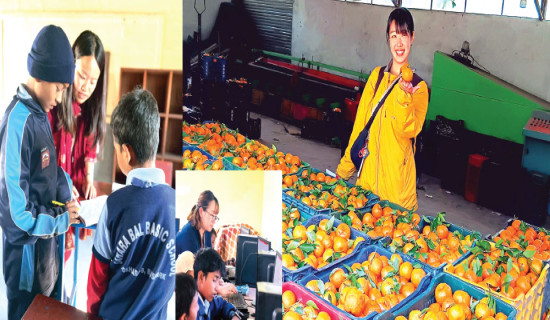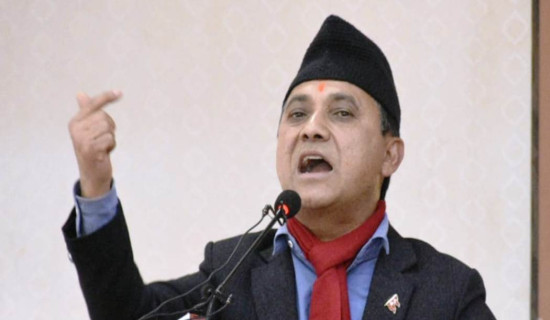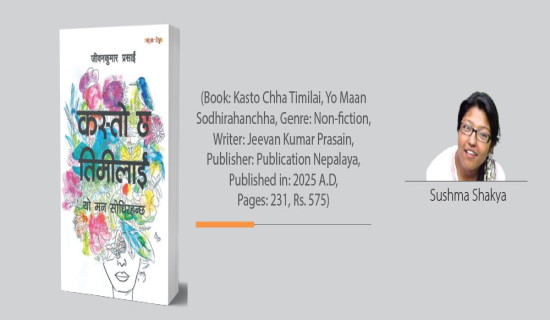- Saturday, 17 January 2026
Initiatives In Health And Education Sectors
In the last 100 days, the government has taken some remarkable steps to improve the health and education sectors of the country. This article seeks to delve into the progress brought about by these measures.
Recently, the government has decided to treat burns free of charge for those unable to afford the treatment cost. This initiative will provide critical support to vulnerable individuals and ensure that no one is deprived of essential care due to financial constraints. Last week, the government decided to waive the transportation fare for Female Community Health Volunteers (FCHV). The policy aims to reduce financial burdens and also recognises their significant contributions to community health, particularly in maternal and child health. This is a big step towards enhancing health service delivery and has far-reaching impacts. Female health workers, especially those in rural or remote areas, often face financial challenges. Travel expenses can be a significant barrier, preventing them from reaching communities desperate for healthcare services. Waiving these costs helps remove this barrier and encourages more women to join the workforce and to down on their effort.
What’s more, this step also contributes to ensuring access to healthcare in hard-to-reach areas for the most vulnerable communities. In many regions, female health workers are crucial for providing maternal and child healthcare. By making travel costs free, governments and organisations can support their mobility, ensuring that women and children in such areas receive essential health services. Burdened with additional household responsibilities, many of them also have lower incomes than their male counterparts. Many frontline health workers often face challenges like long hours, difficult travel, and limited compensation, which affect their ability to deliver essential services.
Effective healthcare
Through this measure, the government seeks to alleviate some of these difficulties, enabling FCHV to better serve communities without bearing extra expenses. When they feel valued and supported, their job satisfaction and retention rates increase, and this is crucial at a time when FCHV are resigning en masse, citing burnout issues that are making headlines. This newly enacted provision helps such workers to raise their income by saving some money. To make the incomes of men and women comparable is to reduce gender disparity. Such measures are, therefore, necessary to build equitable and effective healthcare services.
Likewise, Nepal’s Cancer Control Strategy 2024-30 was launched in the first week of September by the Ministry of Health and Population (MoHP). The strategy aims to reduce cancer incidence, morbidity, and mortality by focusing on prevention, early detection, diagnosis, treatment, and palliative care using evidence-based interventions. The plan’s comprehensive approach seeks to improve the quality of life for cancer patients across the country. At the same time, the BP Koirala Memorial Cancer Hospital has expanded its services to Surkhet Provincial Hospital. This expansion is part of a broader initiative to enhance cancer care services across the provinces.
Agreements have also been made with Seti Provincial Hospital in Dhangadi, Kailali district, and Koshi Provincial Hospital in Biratnagar, Morang district. The expansion is in line with the Cancer Control Strategy, aimed at decentralising cancer treatment services to ensure accessibility throughout the country. Bir Hospital and TU Teaching Hospital Maharjgunj have also launched cancer units. Bhaktapur Cancer Hospital has also expanded its services to Koshi Hospital in Biratnagar and Narayani Hospital in Birgunj.
There’s one more remarkable event that has happened during that period: In the last week of August, Dhulikhel Municipality, in Kavre district, was recognised as the second healthiest city in Asia by the World Health Organisation (WHO). This award underscored Dhulikhel’s extensive efforts in promoting public health and meeting key health and sustainability criteria. The evaluation, conducted over a period of two years, assessed various health indicators like child health, political commitment to public health, and innovative health programmes. The municipality’s initiatives included tuberculosis eradication campaigns, digital health profiling for citizens, and regular health camps. It also emphasised community participation, engaging hundreds of residents, especially female health volunteers, in these efforts. As part of the recognition, it was honoured with a monetary reward of USD 5,000.
In addition, the MoHP has focused on enhancing the quality of health services by expanding digital health initiatives, including the Integrated Health Information Management System (IHMIS), which aims to streamline health data collection and reporting across all provinces. The electronic reporting of health facility data is a critical step towards making informed healthcare decisions. These measures serve as a testament to the government’s concerted effort to address healthcare challenges and improve the accessibility and quality of its health services, aligning with the broader development goals.
Higher education reforms
Meanwhile, some significant efforts have been made to improve the education sector as well. Featuring prominently among the priorities of the Ministry of Education, Science and Technology is addressing issues in community schools and ensuring higher education reforms. There have been discussions on the need to make secondary education free and compulsory, with the aim to enhance accessibility and retention in schools, as well as on ways to link school nutrition programme with local products and improve the evaluation and examination systems at various educational levels. Recognising the issues with university education, reforms in national universities have been in the works to improve their appeal and retain students within Nepal.
In addition, initiatives have been taken for systemic and efficient policy changes to address the education sector’s long-term and immediate challenges. Work is in progress to effectively implement educational calendars in universities to make sure that academic schedules are in agreement with students’ needs. Also included in the work is the development of a syllabus that produces capable manpower and also aligns with present-day needs.
A period of hundred days is, of course, too short to assess the achievements. But going by the works the government has done or put in the pipeline, promising signs are unmistakable that things are going to improve markedly should they go as planned and also in the present flow.
(Basyal works as a journalist at The Rising Nepal.)

















